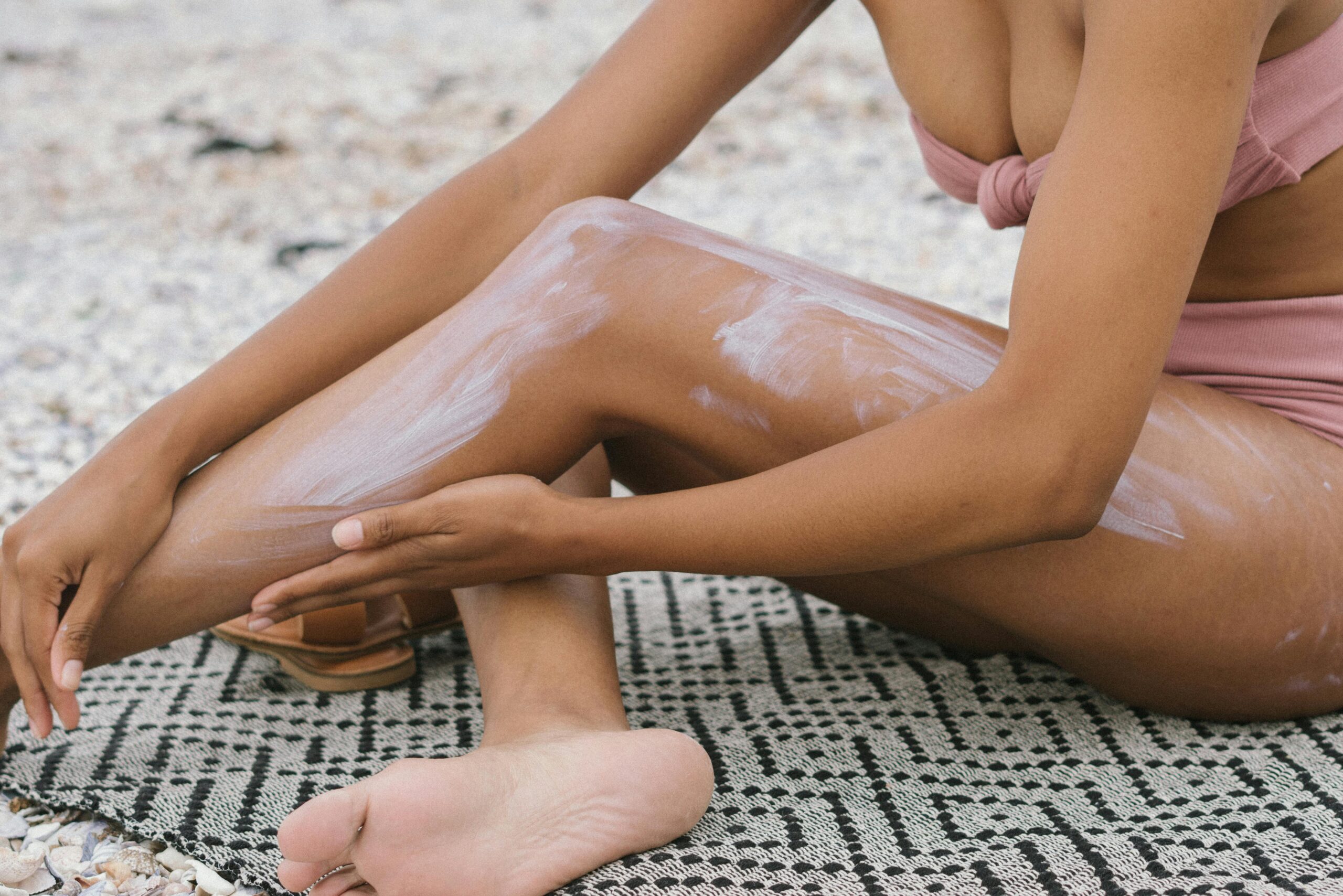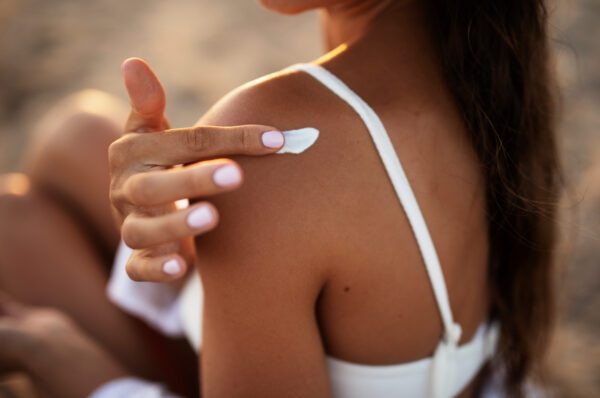Applying sunscreen has evolved from a dreaded pre-beach ritual to (hopefully) a daily habit in your skincare routine. But do you know what SPF actually means? And are you using enough sunscreen to provide protection? Here’s everything you need to know.
What is sunscreen?
Sunscreens are topical products that help protect your skin from the sun’s damaging rays. These rays are called UVA, UVB and UVC.
- UVA rays can penetrate the deeper layers of the skin and cause premature ageing.
- UVB rays can reach the outer layer of the skin and cause tanning and sunburn.
- UVC rays don’t typically reach the earth’s surface as they’re absorbed by the ozone layer and atmosphere.
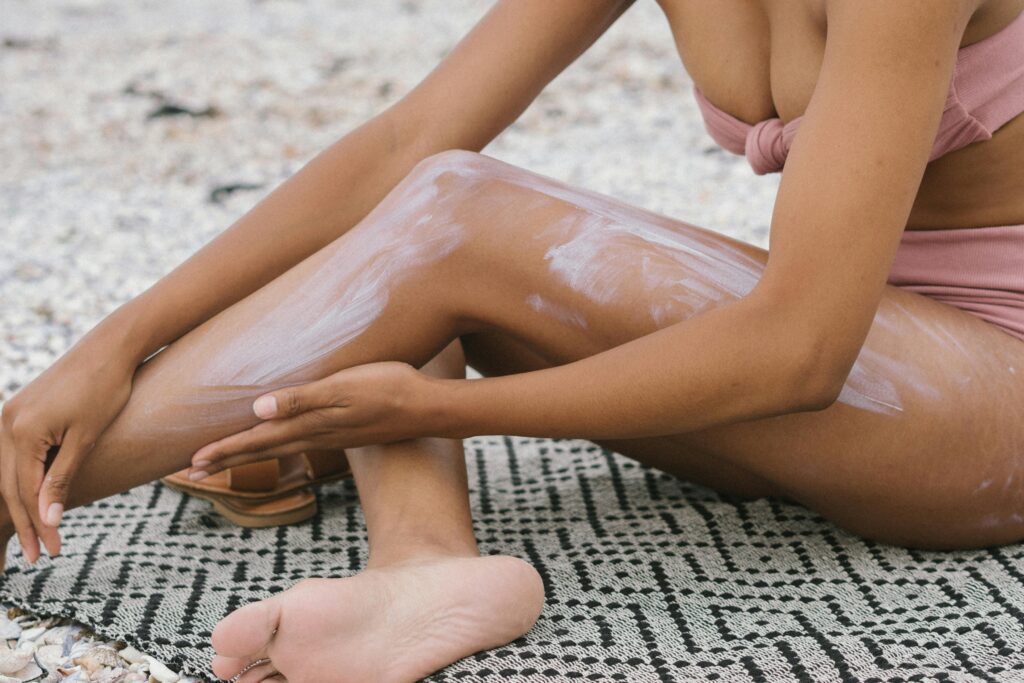

What does SPF mean?
SPF stands for Sun Protection Factor.
The number explains how long it would take for the sun’s rays to burn your skin if applied exactly as directed. For example, if you take ten minutes to burn when not wearing sunscreen, if you apply an SPF 30, it will take 30 times longer to burn. But we’ll say it again: this is only if the product is used exactly as directed.
What does ‘broad spectrum’ mean?
When a sunscreen is labelled as ‘broad spectrum,’ it means it will protect your skin from both UVA and UVB rays. And these rays aren’t just responsible for sunburn; they can also cause premature ageing, hyperpigmentation and even skin cancer.
Consistently using broad spectrum sunscreens can lower the risk of various skin cancers, including melanoma by up to 50%.
Can everyone get sunburn?
There is a common misconception that only people with very fair skin experience sunburn and are therefore the only ones at risk of getting skin cancer.
It’s true that darker-skinned individuals have additional protection against UV rays due to higher levels of melanin-producing cells (melanocytes). However, this does not provide 100% protection against sunburn or skin cancer.
Although skin cancer occurs less frequently in darker skin tones it still does occur and can be more deadly because it’s often detected in the later stages of the disease.
The consequences of too much sun exposure affect almost everyone and sun protection should be taken seriously by all. The only exception is for babies – The Skin Cancer Foundation recommends waiting until children are 6 months old before introducing sunscreen. Until then, babies should be dressed in protective clothing and kept in the shade.
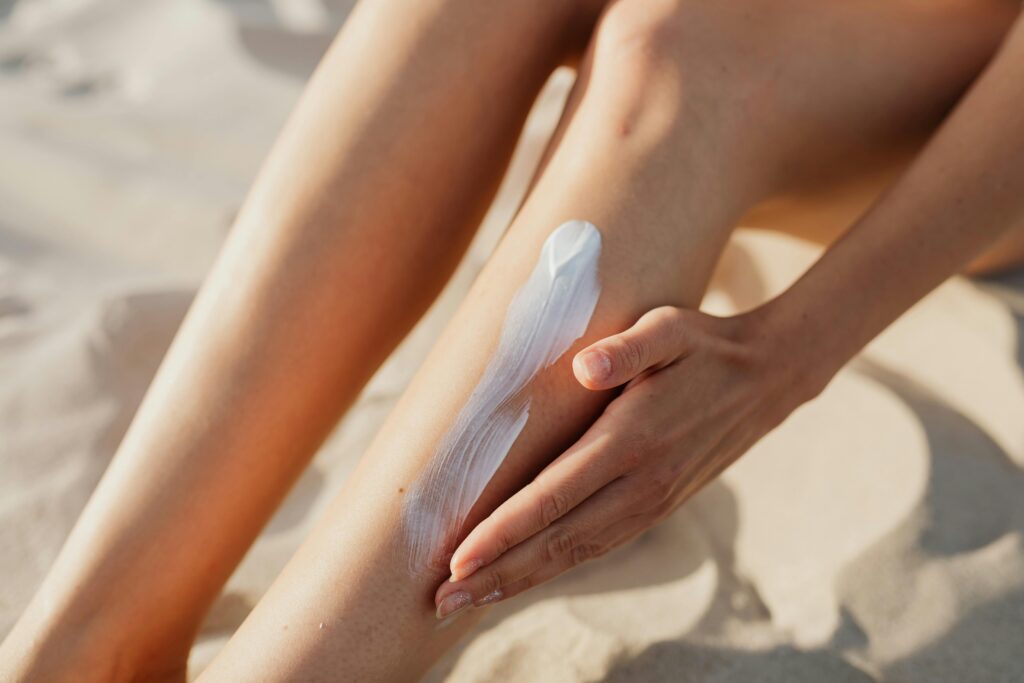

What types of sunscreen are available?
Sunscreens are available in a variety of formats from waterproof to face-friendly, SPF 15 to SPF 100 and everything in between.
Waterproof sunscreens are a good choice and last longer than the standard non-waterproof variety. Don’t forget to check for sunscreens labelled as broad spectrum for ultimate protection.
They also come in many forms. The standard and most common are liquids and creams, but you can also find sunscreens in spray-on and solid “stick” form too.
NB: Take caution with spray-on sunscreens. Avoid inhaling or getting it in your eyes by spraying the sunscreen onto your hands before applying it to your face.
What are the main formulations of sunscreen?
The two most popular types of sunscreens are physical and chemical sunscreens.
Physical sunscreens “block” the sun’s rays by reflecting them away and are sometimes referred to as sunblock or mineral sunscreens. The thicker texture can cause a white cast on the skin making them typically less suitable to those especially with a darker skin tone.
Chemical sunscreens “absorb” the sun’s UV rays and the thinner texture makes them more popular than physical sunscreens. Chemical sunscreens absorb into the skin and as a result, can sometimes cause irritation.
Both types are effective and there is much debate over which is best.
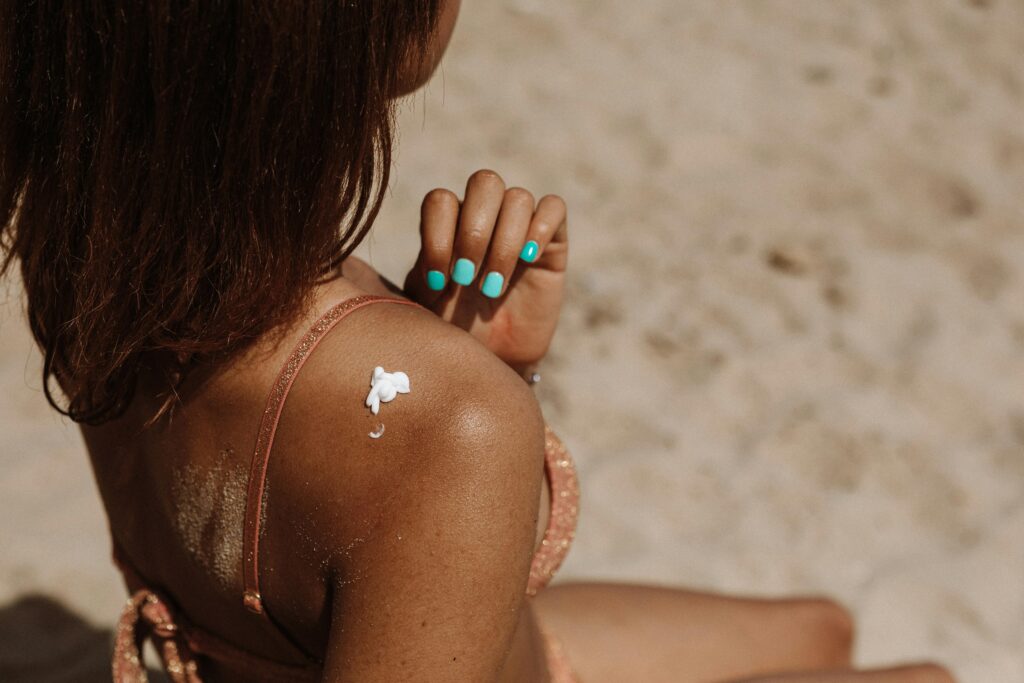

Important sunscreen tips
- Sunscreen should be worn all year round. Even when it’s cloudy, up to 80% of the sun’s harmful radiation can reach the Earth making protection important no matter the weather.
- Apply sunscreen at least 30 minutes before going out so it has time to “bind” to the skin.
- Sunscreen should be applied to all parts of the skin that will be exposed to the sun.
- Reapply sunscreen every 2 hours and even more frequently if sweating or taking part in water activities.
- Are you using enough sunscreen? Dr Sheraz provides some guidance:
- Face and neck: Half a teaspoon
- Arms: One teaspoon
- Legs: Two teaspoons
- Front and back of torso: Two teaspoons
- In the UK it’s recommended to seek shade between 11am and 3pm from March to October.
- Sunglasses, hats and long sleeves should be worn when in direct sun exposure, especially by those prone to sunburn.
- Umbrellas are a great way to protect yourself from the sun and are popular in countries like Japan, although this isn’t so popular in the UK.
Sunscreen is your must-have defence against the sun’s harmful rays.
Regular use not only lowers the risk of sunburn but also combats concerns like hyperpigmentation, premature ageing, and, most importantly, skin cancer.
At Luxepro, we understand the sometimes devastating consequences of excessive sun exposure, and that’s why we’re working hard to bring you an innovative, sustainable and luxurious sunscreen.
If you’ve got a sunscreen query or want to share your thoughts, don’t hesitate to get in touch.

